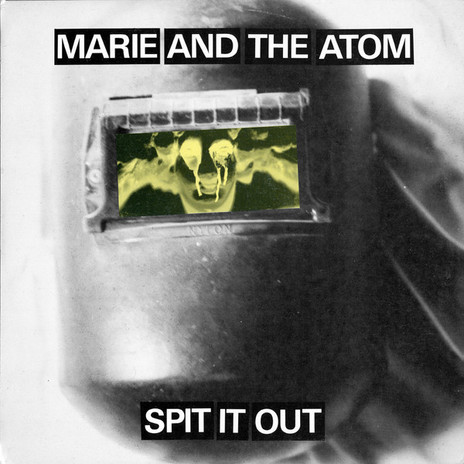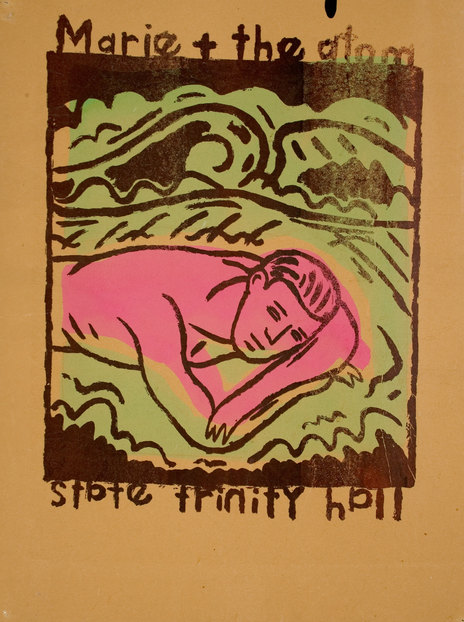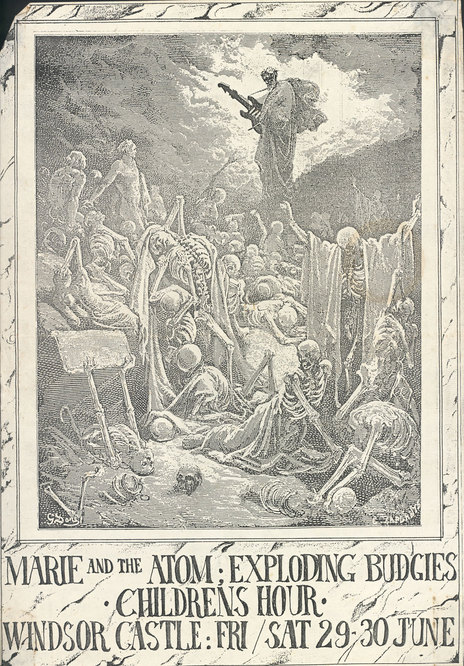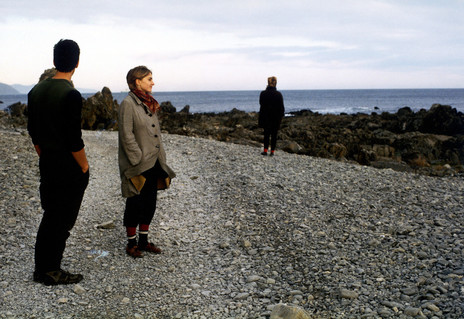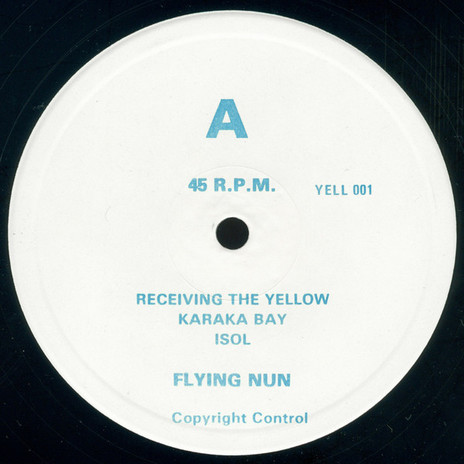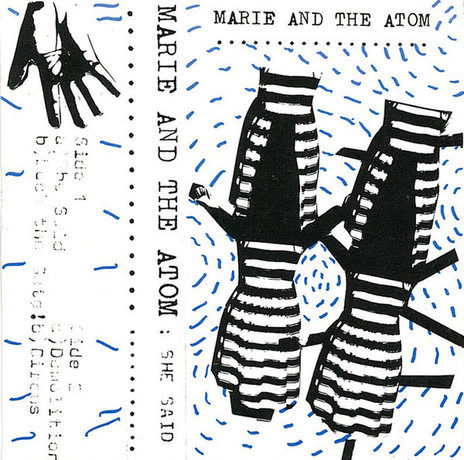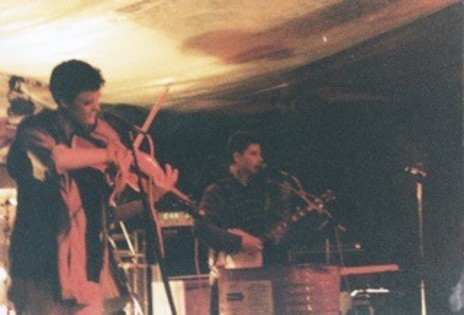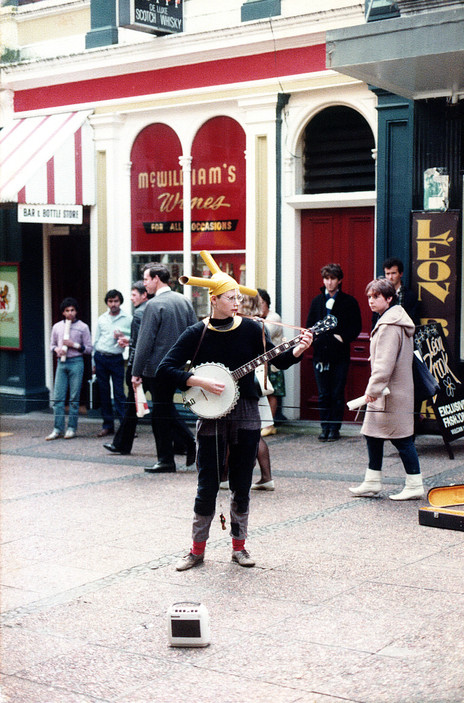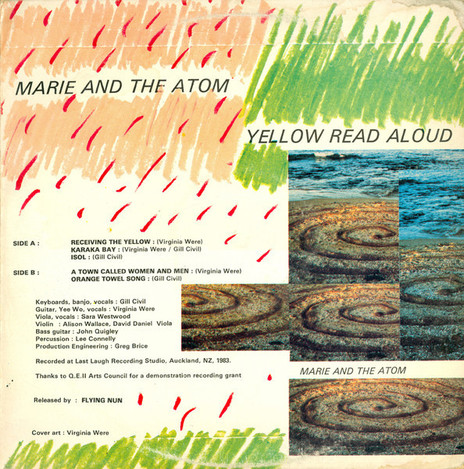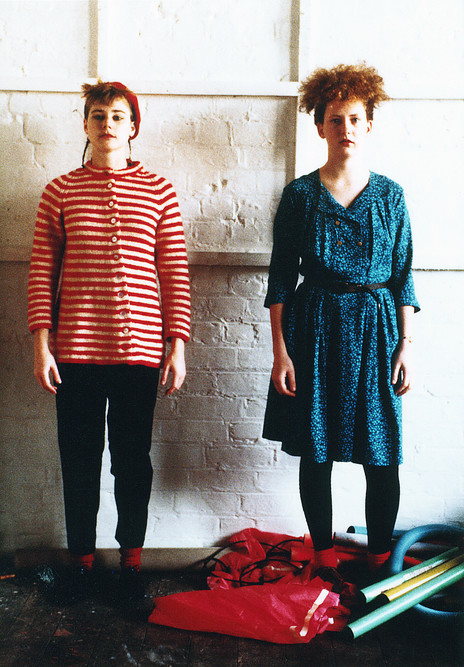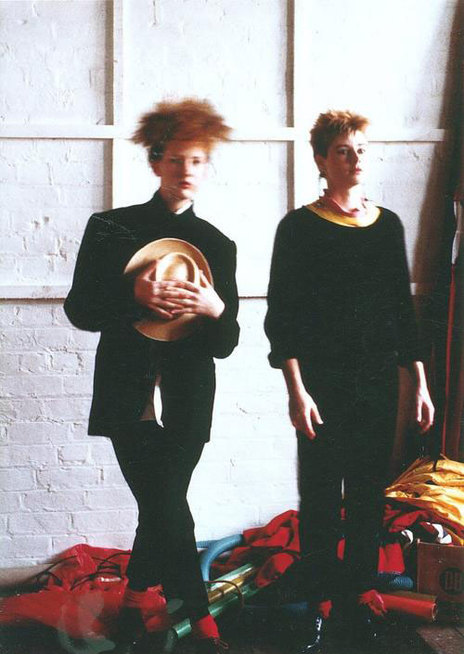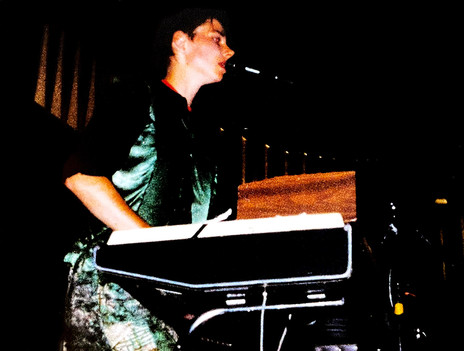Marie and the Atom was the first ALL female group on Flying Nun
The Auckland ensemble’s core was Gill Civil (ex-Bongos, ex-Rhythm Method; keyboards, synthesiser, vocals, banjo, percussion), Sara Westwood (viola, percussion, and occasional vocals), and Virginia Were (guitar, vocals). They also received recording and performing support from Alison Wallace, John Quigley, and David Daniel. Their two EPs – Yellow Read Aloud (December, 1983) and Spit It Out (1985) – were the first on Flying Nun Records by a predominately female group and two of the label’s most adventurous early releases.
In between the two Flying Nun releases, Marie and The Atom also found time to release She Said, a 4-track cassette-only EP on Auckland's Industrial Tapes label. It was recorded in December 1983 at a concert at the Synagogue, with the Kiwi Animal and Papakura Post Office.
They had been performing together only briefly when Greg Brice offered Last Laugh Studio as a place to record some tracks. (Early on, when the group performed on Vulcan Lane, below the studio, he provided the electricity.) They decided to record material Civil had written, some with lyrics by Were. Inspiration also came from local places, including Karaka Bay, Were’s favourite spot. “It was around the bays, past Saint Heliers,” Civil recalled in 2023. “I had a little motorbike so this one particular day we rode around there and she took me to her secret beach. We went down there and recorded the waves, and she drew all these circles, which I think ended up on the album itself.”
Yellow Read Aloud included ‘Karaka Bay’ and ‘Isol’. The latter featured John Quigley on fretless bass to give what Civil calls “the slidey effect”. Westwood and Alison Wallace contributed viola, and David Daniel the violin.
Location sounds were recorded – dangerously – in the middle of Auckland’s motorway. “Ginny took a little cassette into the divider of the motorway just below Grafton Bridge. She’s got her microphone, and she’s recording the traffic coming and going, so that’s the sound background to ‘A Town Called Women and Men’.”
Another influence was the work of New York multi-disciplinary artist Meredith Monk, which inspired Civil to be experimental. “I had this idea that I would go down to the stairs at the bottom of Last Laugh Studios with bells on my legs and with steel things attached to my feet. I’m walking up the stairs and playing the banjo, so it’s getting closer and closer and closer ... Ginny’s at the top going ‘one minute, two minutes, three minutes,’ saying these different things to describe the process of me getting up to the top.” The final track, ‘Orange Towel Song’ was another collaborative work.
Flying Nun released the EP as word had spread about Civil’s downtown performances, which were witnessed by Nun artists such as Chris Knox. Civil paid for the recording of Yellow Read Aloud with a $200 Arts Council grant, and by swapping a good amplifier for studio time. Flying Nun then offered to release 500 copies of Yellow Read Aloud, paying for the cover and artwork. The promise of payment was ... vague. “They said you won’t make anything because it’s just what it will cost to put out... then you might get something if we do. They did that 500 and then they sold another 500, and then another 500 after that. So I don’t know whether we got $20, it wasn’t very much!”
The ‘Yellow Read Aloud’ EP was “personal, bold and beautifully executed,” said Russell Brown
Reviews for the EP were positive – Russell Brown called it “personal, bold and beautifully executed,” and included it in the Rip It Up 1983 Reader’s Poll “best dressed sleeve” category. After the EP’s release, Westwood officially joined the group.
Live performances followed at SPAM (Society for the Promotion of Alternatives in Music), and at Auckland’s Old Jewish Synagogue. In December 1983, their live EP She Said was recorded at the synagogue by Paul Luker (it was released in 1984 on Industrial Tapes). The gig also featured Kiwi Animal and Papakura Post Office.
Civil: “I didn’t even know until half an hour until we went down to that synagogue that it was being planned as a recording... it was all acoustic, I didn’t have my keyboards, all I had was my banjo ... because I would’ve thought of other things to do.” In reviewing She Said positively for Rip It Up in 1984, Russell Brown noted the harder, more percussive sound of their live performance compared to the recordings on Yellow Read Aloud, something possibly attributed to the addition of Westwood.
After Civil and Were played the first Off the Deep End festival as Yello Yello in 1983, all three were due to perform as Marie and the Atom at 1984’s Off The Deep End 2. “We all travelled down to Wellington by train and next day started gathering objects off the street for our performance. Much to everyone’s alarm, Ginny had what she describes as a mental breakdown and Sarah and I had to send her back to Auckland. We considered calling the whole thing off but decided to carry on as just the two of us. Suddenly Sarah and I were under the gun to come up with a completely different set the following day.”
That performance was more conceptual, and they constructed the stage on the floor. “We built a whole structure out of all these objects we found – big pieces of drainpipe, and pieces of wood and 44 gallon steel drums – and created a huge architectural wall between us and the audience. We started doing this percussive thing on the wall of demolition type materials which was falling down all the time. We wanted to knock it all down. The audience was only sitting four feet away, it was actually quite dangerous.” While primarily an acoustic show, electric instruments were used in the back of the space to create experimental sounds. They performed songs from Yellow Read Aloud only if needed, the songs being “like lily pads on the lake ... I think I’ll go into ‘Isol’ now, I think I’ll go into ‘Torch’. But in between we wanted to just create a soundscape and atmosphere... we’d created something completely brand new.” Recordings of the band’s festival performances are held at the National Library of New Zealand.
After funding for a trip to Dunedin was pulled by the Arts Council because they were no longer a trio, Civil and Westwood headed south under their own steam in June 1984. On walking into Governor’s Café, they soon discovered they were already well-known. “It was one of the most exciting moments of my life. We were just two girls from Auckland who had done this weird music. We walk into this café, and all the heads turn to look at us, and people said ‘You’re Marie and the Atom’ – they knew about us!”
walking into Dunedin's Governor’s Café, they soon discovered they were already well-known
After meeting Look Blue Go Purple and Terry Moore (from The Chills), they quickly got a show booked, thanks to Moore, at Red Metro Gallery on George St, performing with Look Blue Go Purple. “They ended up letting us be the headliners, and we packed out the upstairs at Red Metro the first night, and they had to put on another show ’cause it was so popular ... it was just so much fun.” The Dunedin trip proved fruitful as they struck up a professional relationship with Moore, and got a gig opening for The Verlaines on their 1984 tour. “Sure! Why not? It gave us a free ride back to Auckland, plus we might earn a few dollars.”
One important show of 1984 was at the State Trinity Centre in Christchurch with Look Blue Go Purple, where Civil had to prove that she could play the organ. “During the show the first thing I did was put my hands over the entire thing, just [held] as many notes down as possible, and this enormous sound all around the organ. The guy that gave me permission, I hope he wasn’t there to see that!” Russell Brown, again impressed, told Rip It Up readers the performance was “truly amazing.”
The tour was also fertile ground for writing and creating their second EP, Spit It Out. “Marie and the Atom always strived to create new compositions on the fly while performing every gig and as well we tried to develop our songs along the way. All the material on that second EP was developed on the road.”
Post-tour, the group took a break, but an opportunity to support John Cooper Clarke at the Gluepot led to Were re-joining. “We embraced the challenge of merging Ginny’s and my creations with Sarah’s, resulting in a unique musical experience.”
But, all good things come to an end, and during 1985 the group faded out. Civil looked to further her ballet accompanist work in Australia, but returned to New Zealand to record Spit It Out. They received another Arts Council grant for equipment, rather than recording, and they split the recording costs. Flying Nun again agreed to release it. “Because Ginny left us before our first gig at the Off The Deep End festival we were stuck with having to create brand new music, as the music we played with Ginny would no longer work as well.”
The Spit It Out EP, written by Civil and Westwood, was recorded at The Lab in Auckland, with Moore engineering; the artwork was by Westwood. Recording the EP was taxing as “personal and professional strains affected us and our sound engineer.” Once completed, Civil returned to Australia.
Spit it Out slid under the radar in late 1985 but the NZ Listener review was positive, noting the differences between the EPs, and that Spit It Out was more interesting, by “strong, talented women who manipulate their instruments to create music completely their own.” There was also re-ignited interest in ‘Isol’ when it appeared on the 1985 Flying Nun compilation Tuatara.
Civil is not convinced Marie and the Atom are truly done, and is considering reissuing the EPs and releasing live band recordings. “I do have all these live performances,” she says. “It would be nice to be able to get that music out again. It is ripe for rediscovery.”
While back in New Zealand in 2023, Civil caught up with Were. “We agreed that Marie and the Atom really never officially ended. We would still consider playing again, although our skills have changed – I don’t sing really and Ginny says she doesn’t play an instrument anymore. But we don’t see that as an obstacle, it’s quite possible we may get together in the future to recreate a Marie and the Atom experience. Marie and the Atom is always full of surprises so time will tell what we’ll come up with next.”
--
Amanda Mills interviewed Gill Civil in 2023.
